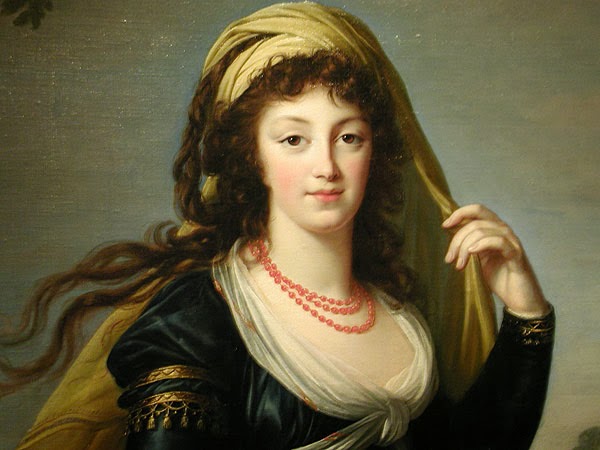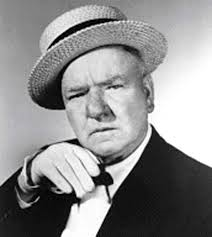Announcements
ATTENTION: Adobe Digital Editions has come
out with version 3. However, it will NOT allow you to read books from older
versions on your e-reader. If you have
an e-reader, do NOT upgrade to this newer version. If you do, there is no fix
to enable you to read the older books.
STAR TREK MARATHON coming! First week of February 1-7, showing movies and episodes
- leading up to…
Geek Day 2.8 on Saturday, February 8th.
Mark your calendar!!
Do you have a young reader in your
house, or a pre-reader? Check out our Tumble Books in our e-resources.
They are animated talking picture books for your young'uns, which will teach
them to love reading.
Computer Classes every Sat.
mornings 10-12. "Open House" Whatever you need. Drop in anytime
during those two hours.
Captain Kirk
Genealogy
tip for the day: Photo Types – Less
Popular Types
Crayon
Portraits
are images that are weak pictures and appear in neutral black images. Then the
picture is gone over with crayon or charcoal. These came about in 1860 and
lasted into the 20th century.
Carbon
Prints were
created by Mungo Ponton in 1839 when he discovered the process. Bichromates
when added to a gelatin mix resulted in an insoluble coating. However the
process was cumbersome and didn't last. Also without proper care, these faded easily.
Platinum
Prints
consists of finely divided platinum metal and are exceptionally stable. They
came in use in 1880 and lasted till about 1930. It has a matte surface with a
steely gray image.
Cyanotypes are called the blue print
process because of the blue tinge to the pictures. Sir John Hershel came up
with the process in the 1840’s. It was used infrequently until the 1880’s. This process is still in use today but is used
more for technical drawings, etc. and is better known as blue prints.
Timeline:
Daguerreotypes: 1839-1860
Salt Prints (salted paper): 1839-1860
Carbon Prints: 1839-1990 (peak: 1864-1950)
Cyanotypes: discovered 1842, used for photography:
1880’s-present
Albumen Prints: 1850-1900 (peak: 1860-1890)
Ambrotypes: 1851-1880’s
Tintypes: 1854-1930’s
Crayon Portraits: 1860-1900’s
Platinum prints: 1880-1930
Interestingly, you will note that the discovery that
chemicals could produce images all came about the same time. Most of the inventors
were in Britain, or in America
(Aside, it is the need to preserve family photos properly that got me into Scrapbooking. Genealogy often leads into Scrapbooking.)
(Aside, it is the need to preserve family photos properly that got me into Scrapbooking. Genealogy often leads into Scrapbooking.)
“History is who we
are; Genealogy is who I am” sg
If any of these posts are helpful drop us a line in
the comments section below. We just want to know if the information we provide
to you is beneficial in anyway.
Jane Austen
1813
|
Jane
Austin publishes Pride and Prejudice.
|
|
1861
|
Kansas is admitted into the Union as the 34th state.
|
|
1862
|
William Quantrill and his Confederate raiders attack
Danville, Kentucky.
|
|
1918
|
The Supreme Allied Council meets at Versailles.
|
|
1926
|
Violette Neatley Anderson becomes the first African-American
woman admitted to practice before the U.S. Supreme Court.
|
|
1929
|
The Seeing Eye, America's first school for training dogs
to guide the blind, founded in Nashville, Tennessee.
|
|
1931
|
Winston Churchill resigns as Stanley Baldwin's aide.
|
|
1942
|
German and Italian troops take Benghazi in North Africa.
|
|
1944
|
The world's greatest warship, Missouri,
is launched.
|
|
1950
|
Riots break out in Johannesburg, South Africa, over the
policy of Apartheid.
|
|
1967
|
Thirty-seven civilians are killed by a U.S. helicopter
attack in Vietnam.
|
|
1979
|
President Jimmy Carter commutes the sentence of Patty
Hearst.
|
|
1984
|
President Ronald Reagan announces that he will run for a
second term.
|
|
1984
|
The Soviets issue a formal complaint against alleged U.S.
arms treaty violations.
|
|
1991
|
Iraqi forces attack into Saudi Arabian town of Kafji, but
are turned back by Coalition forces.
|
|
Born on January 29
|
||
1737
|
Thomas Paine, political essayist (The Rights of Man,
The Age of Reason).
|
|
1843
|
William McKinley, 25th President of the United States.
|
|
1880
|
W.C. Fields, comedian and actor (David Copperfield,
My Little Chickadee).
|
|
W. C. Fields
|
||
honeyfuggle
PRONUNCIATION:
(HUN-ee-fuh-guhl)
MEANING:
verb
tr., intr.:
To deceive or swindle, especially by flattery.
ETYMOLOGY:
Perhaps
from honey + fugle (to cheat). Earliest documented use: 1829. Also spelled as
honeyfugle.
USAGE:
"Don't
try to honeyfuggle me, Wolf McCloud. I'm not pretty, and we both know it."
Jane Bonander; Wild Heart; Pocket Books; 1995.
Jane Bonander; Wild Heart; Pocket Books; 1995.
Quote for the Day
It is not only the prisoners who grow coarse and hardened from corporal punishment, but those as well who perpetrate the act or are present to witness it. -Anton Chekhov, short-story writer and dramatist (1860-1904)
Today’s
Recipe
Soups
for Cold Winter Days
Yield
– 4 servings
My mother was quite the fan of squash, although I have never
acquired the taste as much as she had. So I know there are a lot of squash
lovers. Here is a squash soup recipe for you. It looks good! J You’ll have to tell me
if it is.
Ingredients
- 2 1/2 pounds butternut squash
- 3 sweet apples, such as Golden Delicious
(about 1 1/4 lb. total)
- 3 cups fat-skimmed chicken broth
- 1/2 cup dry white wine
- 1/4 teaspoon ground cinnamon
- 1/4 teaspoon ground nutmeg
- 1/4 teaspoon ground ginger
- 1/8 teaspoon hot chili flakes
- Salt and pepper
- 3 tablespoons minced fresh chives
Preparation
1. Rinse
squash; cut in half lengthwise and scoop out seeds. Place halves cut side down
in a 12- by 17-inch baking pan. Peel, halve, and core apples; add to pan, along
with 1/4 cup water.2. Bake in a 400° regular or convection oven until squash and apples are tender when pierced, about 45 minutes. When cool enough to handle, scoop flesh of squash from peels; discard peels.
3. In a blender or food processor, in batches if necessary, whirl squash, apples, and broth until smooth. Pour purée into a 3- to 4-quart pan. Add wine, cinnamon, nutmeg, ginger, and chili flakes. Bring to a simmer over medium-high heat; reduce heat and simmer, stirring occasionally, to blend flavors, about 15 minutes. Add salt and pepper to taste.
4. Ladle soup into wide bowls and garnish with chives.
Nutritional Information
Amount
per serving
- Calories: 224
- Calories from fat: 2.8%
- Protein: 8.6g
- Fat: 0.7g
- Saturated fat: 0.1g
- Carbohydrate: 46g
- Fiber: 6.7g
- Sodium: 67mg
- Cholesterol: 0.0mg
ENJOY!
Now You Know!





No comments:
Post a Comment